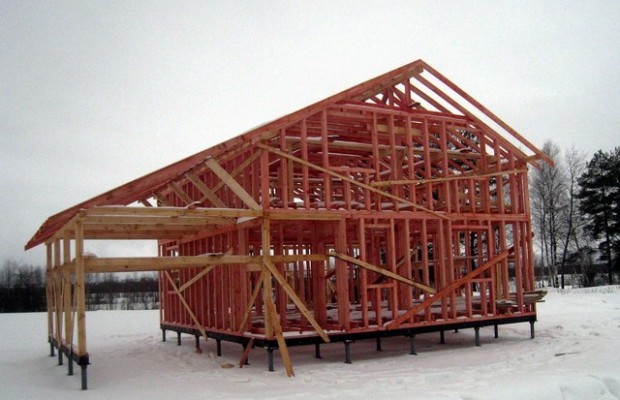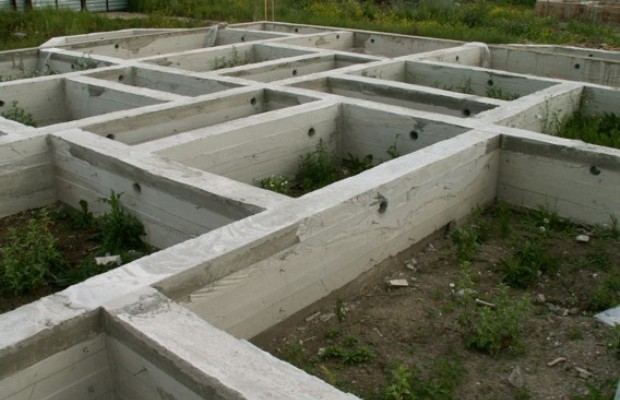The service life of a frame house - what does it depend on and how to extend it?
An obstacle in making a decision on the construction of a frame house is doubts about its durability due to the fragile, at first glance, construction. In fact, such buildings have a long service life, which can be increased if you know some of the nuances of construction.
Frame house - how long will it last?
The service life of a frame house in Russia is determined, as in the whole world, by compliance with the technology and the quality of the material. In the technical documentation of the house kit, GOST of the Russian Federation, 75 years are indicated. But practice proves that buildings erected using frame technology retain their ability to operate for 100 years or more. Climatic conditions do not play a significant role, the differences are only in the technology of insulation. So in the north of Russia and in the south, frame houses are equally durable.
Distributed throughout the world, regardless of the level of development and climate. They have common features regarding the material and construction technology, they consist of elements that are tightly interconnected. Structural elements are manufactured at the factory according to the dimensions specified by the project. Assembly takes place at the construction site. Depending on the characteristics of the country, such houses have their own specifics. Recently, it has been popular in Russia, which came from Finland, Sweden, Norway. Buildings built with its use are often called Finnish houses in Russia.
In most of Western Europe and North America, low-rise buildings are built mainly using frame technology - 7 out of 10.
The reliability of houses built using frame technology has stood the test of time. Similar wooden houses with straw and clay insulation in Europe cost 200 years or more. Norwegian houses with dry sawdust insulation are known, which have stood for more than two centuries. In the Kemerovo region (Prokopievsk), frame-panel houses have been serving for more than half a century. The most important condition for durability is the correct design and adherence to technology. Like any other building, the frame requires periodic repairs, in particular, the replacement of insulation after 40-50 years.
Finnish house - the most important structural elements
Frame houses according to the type of manufacture can be divided into frame-panel and frame-frame. The former are common in the north, most often one-story, with a gable roof. For the construction of a frame house, parts are produced in different variations - from individual elements (frame, panels, windows, doors) to fully assembled wall panels, with a ceiling, a roof. Factory production with strict observance of all sizes allows you to install the box in place in a week.

If the construction of a frame-panel house requires equipment, then a frame-frame house can be built without it. Any project is used, even your own, it is possible to build it yourself. First, a foundation is made, the lower trim of the frame house is attached to it, on which the frame is installed, it is strengthened, the roof is mounted. Only after that proceed to the sheathing of the frame and thermal insulation. The rest of the work does not differ from the construction of a frame-panel house. You can build such a building on your own in six months.
Strapping elements provide structural strength of structures, reliability and durability. Without the bottom strapping, which secures the frame to the foundation, it is impossible to build a house. In addition to strengthening and connecting functions, it plays an important role in redistributing the load of the walls of the house on the foundation. It is important to choose the right material for the bottom trim. Coniferous wood is preferable, which is durable, little susceptible to deformation and cracking. The high resin content protects the material from moisture.
The upper trim of the frame house combines the internal and external walls into a single solid structure. It also transfers the load of floors located above the walls to the roof and evenly distributes it. For the upper trim, use a material similar to that used in the bottom, with the same dimensions so that the cross section of both trims matches. Subject to this condition, further installation and insulation will be simplified. The fastening of the upper harness is carried out to the racks, which are installed strictly vertically, without the slightest deviation.
We are building housing - what time of year is better?
If we talk about houses made of brick, concrete, various blocks, then construction is carried out only in the warm season, but a frame house can be built in winter. This is another important advantage of frame technology. If the decision to build housing was made in the fall, there is no need to wait for spring, because during the winter you can build a frame house, and in the spring you can already live in it. Winter is even better suited for construction, since precipitation at this time is 2 times less than in summer. A natural question about pouring the foundation. There are two solutions here: either make a foundation in the summer, or use modern additives that allow you to fill in during frosts.

Experts note that the technology of winter construction is beneficial, first of all, to the customer. By winter, the construction boom subsides, building materials, services of construction companies become cheaper, the bill in total can go to hundreds of thousands of rubles. Wood is harvested in the period November-April, it is profitable to build from freshly harvested wood - it is not only cheaper, but also of better quality: it is harder, it cracks and splits less, sawing is easier, with maximum accuracy. Often, the construction of a frame house in winter is carried out because of the high-quality, physically lighter, fresh wood of winter cutting.
Frost significantly reduces the risk of infection of wood with fungi, rot, pests, which are activated only with heat. Winter buildings are less prone to shrinkage, they are more durable. At sub-zero temperatures, as a rule, the weather is dry, and the site at the building site is free of dirt, the equipment does not deform the upper soil layer, and the building materials remain clean. In the summer, when prolonged heavy rains begin, even wooden parts treated with an antiseptic turn black before our eyes.
Building life expectancy - what affects it?
A house built using frame technology is able to serve for a long time and reliably, if it is built, taking into account and following the technological rules. The experience of the Scandinavian countries, where they began to build such buildings many centuries ago, is especially valuable. Their technology is adopted by many Russian companies that adhere to the following rules during construction:
- pouring a very strong strip foundation with through holes for ventilation of the beams;
- correct execution of the lower strapping with anchoring;
- thorough impregnation of wooden structures with antiseptics and flame retardants;
- the device of a rigid frame made of high-quality material;
- insulation with modern materials, providing ventilation and air exchange for insulation.
A monolithic foundation made of high-quality concrete with technologically correct preparation of the base, correct viscous reinforcement will ensure the stability of the building. In the foundation above the soil surface, air is made to prevent the appearance of mold on structures and their decay.

The lower strapping board is treated with antiseptics and placed on the waterproofing of the foundation. After laying it, the diagonals are accurately measured, the walls and corners of the house are securely fixed. Reliable fixation is ensured by direct anchoring of the lower trim to the foundation. Anchor holes must be processed. Proper anchoring is the key to uniform distribution of the load of the entire structure on the base. The shift of the strapping board during construction is excluded, the diagonals are preserved.
All key structures are thoroughly impregnated with antiseptics and flame retardants (increase fire resistance). The wood is impregnated on all sides so that the substances penetrate deep into the fibers. The rigid structure of the frame with vertical posts, horizontal crossbars and slopes significantly affects the durability of the house. The main load is assumed by the vertical racks, so the frames are practically not subject to shrinkage. It is important to use quality wood.
Scandinavian houses are able to withstand any frost, it is no coincidence that they are built at polar stations. Resistance to extreme cold is ensured by reliable thermal insulation, which is used as mineral wool. So that the insulation is not exposed to moisture, modern Scandinavian technology suggests using membranes for vapor barrier and diffusion materials. The vapor barrier membrane prevents the penetration of steam from the room to the insulation, the diffusion membrane prevents moisture from the outside, and also ventilates the space between the skins.
The life span of the frame structure is affected by air exchange in the structures. To ensure natural air exchange, a gap is created, which is formed by the device of an additional frame. A space is created between the skin and the wall, through which the air rises, passes through the roof lining and leaves through the ventilation gap in the ridge. Thus, excess moisture and condensate are removed from the insulation. But even strict adherence to technology does not guarantee a long service life of a frame house, if the owner does not monitor its condition and does not carry out repairs on time.
